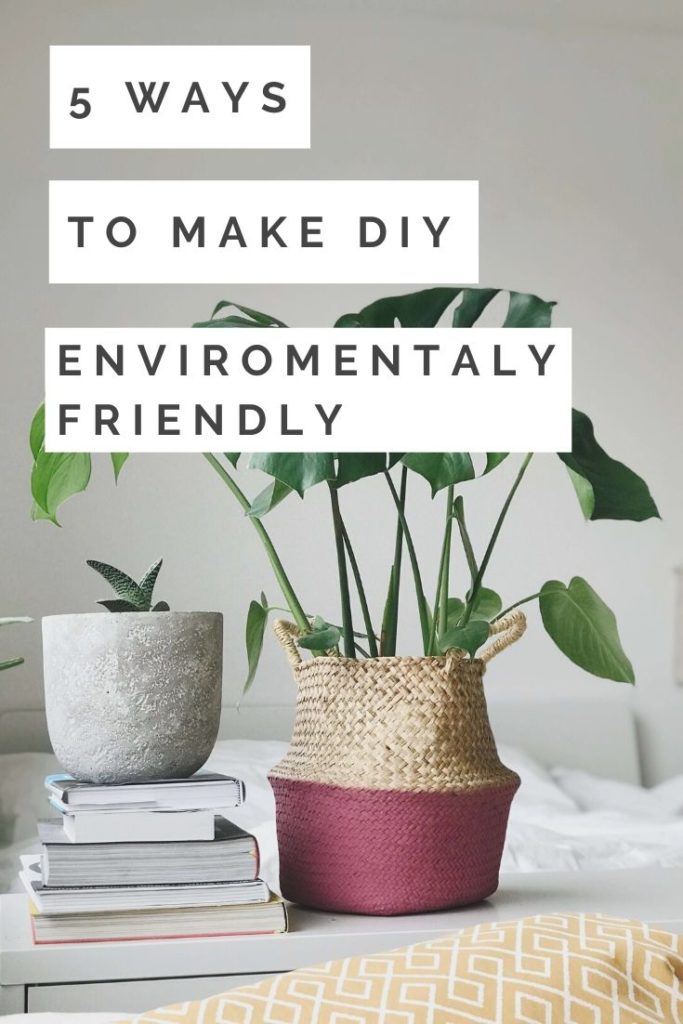With the help of AnyJunk – I’ve written a handy list of 5 ways you can make eco-friendly home improvements.
This warmer weather we’re currently having makes now the best time to start tackling DIY jobs around the home. If like me, you’ve been busy weeding your garden, sorting out your attic and painting your home from top-to-bottom! The downside to decorating is the amount of waste it can produce which is not disposed of properly, can be damaging to the environment if not dealt with properly. That is when AnyJunk can step in…
GET TO KNOW ANYJUNK
AnyJunk was founded in 2004 and grew from one man with a van to become a nationwide man and van rubbish removal and skip hire company. Today, the AnyJunk network comprises over 500 trucks and undertakes up to 400 waste movements per day. Through their online portal you can book a clearance pick up with established, local waste businesses across the UK to help you clean up your clutter and mess with ease.
Their service is good for bulky waste (items that won’t fit in your wheelie bin) that you want to get rid of. They will collect fridges, ovens, bikes, garden rubbish, carpets, mattresses, soft furnishings, packing materials and bric-a-brac. As well as messy, dirty junk like home improvement /DIY waste (eg. rubble, broken tiles), doors & windows, kitchen and bathroom units, fence panels, garden refuse, and old flooring. In fact, AnyJunk divert 96% of waste away from landfill which is pretty amazing for you and our environment. Using Anyjunk is an easy way to make eco-friendly home improvements this year!
The booking system is super smart. It matches your job to the nearest operator and you’re able to track what’s happening in real time. Their aim is to reduce distances driven which has impact on both cost and your carbon footprint per job. It cuts response speeds and rather than adding trucks to the roads, help local waste operators use their existing fleet more efficiently. Clever, hey?

Photo by Jeff Siepman on Unsplash
5 simple Ways You Can Make Eco-friendly Home Improvements
1. Measure Carefully
Over-ordering materials (or producing excess off-cuts) can produce unnecessary waste when starting a home renovation project. And ordering materials you don’t need is going to cost you extra money. It’s also bad for the environment too as it produces unwanted waste.
My tip? When starting a home DIY project, plan out everything before you start. Depending on the size of your project, you’ll want draw out detailed plans in advance. Take good measurements to make sure you only order what you need. And double check your building material order (several times) to make sure you have got it right.
READ: GARDEN DESIGN ADVICE – PLANNING TIPS FOR YOUR OUTDOOR SPACE
2. Budget Efficiently
It’s easy for home improvement costs to escalate. That is why it is important to add at least 10% to your planned costs as a contingency fund. You need to have a budget set aside in case things go wrong during your build. And expect other costs cropping up during a renovation.
Things like disposing of waste responsibly, clearing old kitchens or removing old furniture you no longer want. Make sure you factor in rubbish clearance, a skip or a man-with-a-van into your budget from the start. This will keep your project environmentally friendly with minimal trips to the tip for you.
READ: 10 BUDGET BATHROOM MAKEOVER IDEAS
3. Up-cycle And Recycle
Buying new, off the shelf kitchens and bathrooms is the obvious way to update and add value to your home. But more people are using old items to add a touch of creativity to their home improvements.
In my own home, I have bought vintage furniture off Gumtree and then painted it for a new look. I’ve shopped around for second hand planters for my garden. My kitchen shelves are made from old scaffolding planks. This is such an easy way to make your home improvements eco-friendly.
Before you invest in something new, why not see if you have old items you can up-cycle your home improvements. Or take a second look at any old materials you have knocking around in your home to see if you can use them in your DIY project.
READ: DIY COPPER PIPE DRAWER PULLS
4. De-clutter
Before you start your room makeover, it’s a smart idea to set aside time to de-clutter your space first. Focus on getting rid of items that no longer have a place in your home.
If you’re investing in rubbish clearance solutions, then what better time to start sorting the rest of your home to get rid of clutter.
Get everyone involved! Ask your little ones to sort through unloved toys. Have a rummage in your wardrobe and sort out clothes that no longer fit you. Ask your partner to tackle the Tupperware drawer in the kitchen. It’s all hands on deck.
Every corner of your home can be easily organised so that your home works harder for you all.
If you want more advice on reducing waste and streamlining the home improvement process, check out https://cinergi.co.uk/ for expert tips on sustainable solutions, such as solar panels and air-source heat pump installations.
READ: 4 EASY TO FOLLOW DECLUTTERING TIPS
5. Build Responsibly
With bigger build projects, check you are following building regulations, that work meet building control standards and energy-saving measures.
If you’re extending your home, adding a loft extension or replacing your roof, look for a company, like Guy Roofing, that has an ethical focus. Ask how and where they dispose of their waste and junk. Dig a little deeper! Make sure when renovating your home the build team you hire aren’t going to cause any environmental damage.
READ: LETS AVOID COWBOY BUILDERS
5 simple Ways You Can Make Eco-friendly Home Improvements
Hope you have loved reading this post and it’s given you food for thought. By following these 5 ways you could reduce the impact your next build project on the environment.
If you want more advice and help on how to make your home improvements more eco-friendly, then check out AnyJunks handy householders bulky waste disposal guide which is jam-packed full of information.
Have a wonderful day





One thing I do is to research where I shop for furniture. I see if the materials they use are sustainable because well, it lasts longer and it’s a good investment. Furniture is quite expensive so one tip is not only looking if it’s aesthetically pleasing but look at its longevity as well. Sustainable furniture is more eco-friendly.